 |
Articles
24 Sep 2014 What’s going on with BIM in RussiaVladimir Talapov
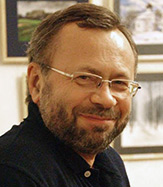 About the author:
About the author: Vladimir Talapov is a person with a challenging career: a mathematician who became an architect, and an architect who remains a mathematician. A holder of a doctorate degree in physics and mathematics, a professor of the International Academy of Architecture (Moscow branch), a member of "buildingSMART Rus" Non-Profit Partnership and a lead expert of “Integral Consulting”. Vladimir has been involved in design automation and college lecturing for over 30 years, he is an author of nearly a hundred publications on BIM and translated three text-books on Revit, as well as the author of the first and so far the only book on BIM in Russian – “Basic BIM: Introduction into building information modeling”.
Adapting BIM in Russia is a subject that for a long time has got hyped up the most forward-minded people in our design-building industry. Obviously, the emerging issues often have a purely Russian flavor, but there is a lot in common with the practice of adapting BIM in other countries, so it seems that the paper will be of interest to our foreign colleagues. Good ideas put forward by smart people nourish national pride in any country and are global assets, while stupidity is the same everywhere.
Two years ago I already published a review of the issue on isicad.ru where I shared some predictions about developing BIM in Russia. It caused a keen interest of the readers. Time passed and it is now possible to total the results again. Especially as we do have results and they are largely satisfying, although in the recent months new concerns have emerged.
The paper originally was intended for Russian readers so it has links to other publications in Russian. Those links could not be replaced with the English ones in a translated version, so we decided to leave them as it is. An English reader should be able to get a grasp of those links through the illustrations. Or just use Google Translator which will not only give you an idea about the content of the publications but also put you in a cheerful frame of mind.
BIM technology is bound to be adapted in Russia
Every Russian remembers a famous phrase of an immortal character Ostap Bender from a famous novel of Ilya Ilf and Evgeny Petrov: “Things are moving, gentlemen of the jury”. It is also a perfect characterization of the core of the things: the BIM-mass accumulated during these years is finally reaching its critical level and generates results. First of all, it concerns the decision of the Presidential Expert Council on devising a plan to adapt BIM in industrial and civil construction of March, 4, 2014. In a nutshell, it marks the beginning of government–controlled BIM implementation in Russia. It is precisely the beginning: the main work is ahead and it must be done.
To a considerable extent, such clear success was fostered by establishing and robust efforts of “BIM/IPD Group” certified at the International Academy of Architecture Moscow brunch (a special thank-you to IAAM from us for this), later transformed into "buildingSMART Rus". Among “spiritual sources” of sprouting and promoting the BIM idea in Russia www.isicad.ru undoubtedly is at the forefront.
BIM in design
I am pleased to observe that BIM has been increasingly adapted in design. Now hardly any design organization asks a question: “Do we really need BIM?” Mostly they ask how to implement the technology. Obviously, adapting BIM requires efforts and understanding from both the management and executors at all levels but then with proper performance informational modeling gives good results.
Unfortunately Russia lacks BIM-statistics (in general there are no serious statistical surveys of design – building industry), so the number of design organizations that start adapting BGIM can only be evaluated by feel. And everyone feels differently. For instance, I mainly deal with those who adopt BIM, while my opponents – with the followers of “manual” drawing, which we still have plenty. Nevertheless, nobody challenges the trend of an increasing interest towards adapting BIM in Russia.
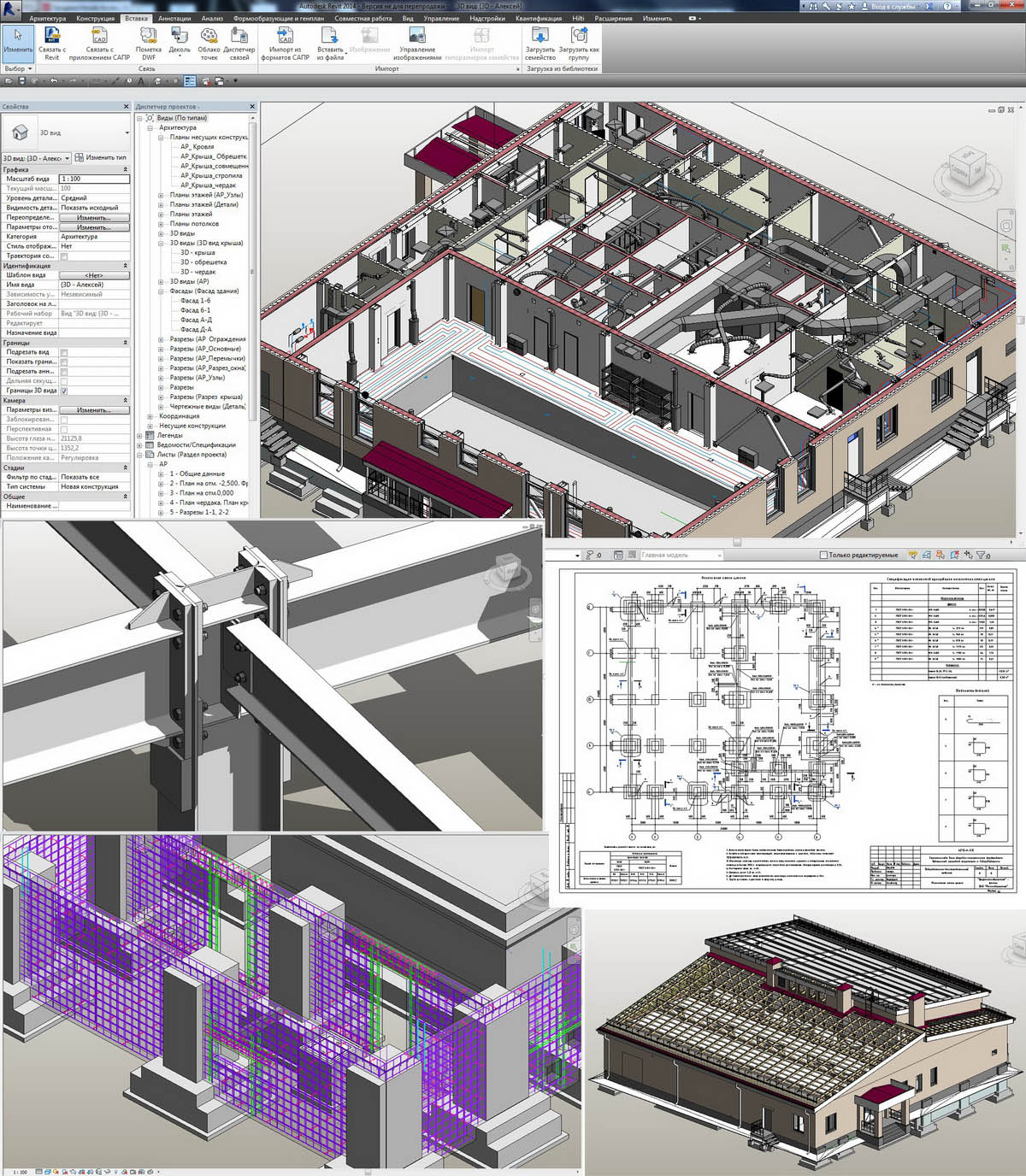
Fig. 1. The building of a Health-Improving and Rehabilitation Centre.
A pilot project of “Irkutskzheldorproekt” with participation of “Integral Consulting”. The work is in Autodesk Revit.
We are especially pleased that expert examination bodies started getting engaged in BIM use, and I know of some projects that Siberian designers submitted to ”Mosgosexpertiza” and successfully passed all necessary procedures. Currently, ”Mosgosexpertiza” is getting ready to accept models from designers without a considerable part of drawing documentation typically required in such cases.
The noted problems of adapting BIM in building engineering equipment become clearer and narrower, practically coming to naught. On the one hand, increasingly more engineering firms see direct financial benefits from adapting BIM to MEP since it cuts down project errors on a construction site, and they endeavor to use the technology. On the other, during this period BIM programs in MEP advanced soundly to the user side, although their electric parts in Russia still need refining.
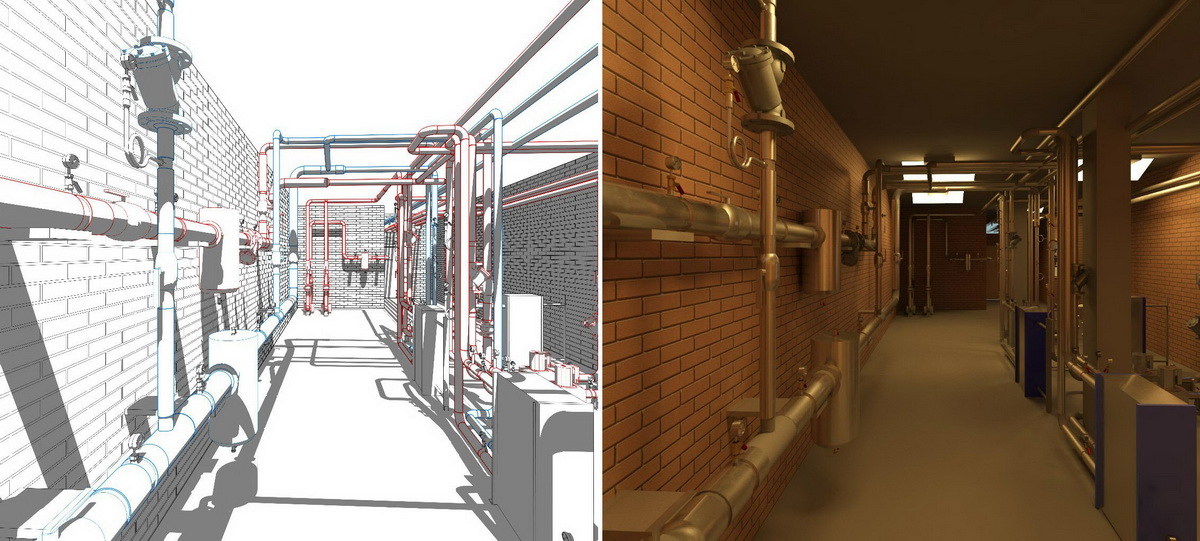
Fig. 2. The heating unit of an administrative building. A pilot project of “Sibzheldorproekt” with participation of “Integral Consulting”.
The work is in Autodesk Revit, 2014.
BIM in construction and asset management
It is correct to state that “things are moving” although there is still a long haul ahead to a mass movement. But there is some success. First, builders and developers show interest in BIM. Second, information modeling is increasingly used even in such complex building projects as new industrial enterprises. I put “even”, but perhaps “primarily” would be more accurate because BIM advantages are especially effective in technologically complex facilities.
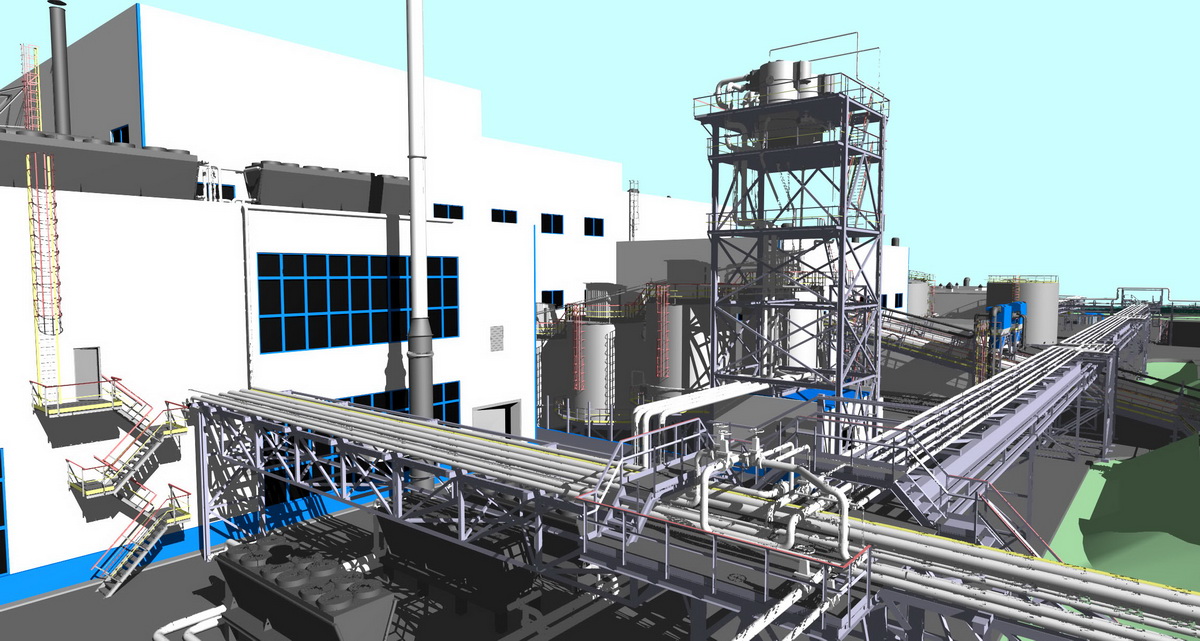
Fig. 3. Amursk Pox Hub. “Polymetal Engineering” CJSC. The work was completed using AVEVA program package, 2013.
I am especially pleased to point out that Russia has done well in such very complex operations as decommissioning nuclear plants, which is recognized internationally.
A unique case – decommissioning Kursk nuclear plant will extend for nearly 70 years. During this period everything will be changed beyond recognition: computers, programs, files, work technology, not to mention that hardly anyone who today is responsible for process modeling will survive until it is completed. I suspect that project results will be summed up at the 100th anniversary of “NEOLANT”, the main project consultant. But the ball starts rolling: it is simply impossible to work with nuclear power facilities without information modeling.
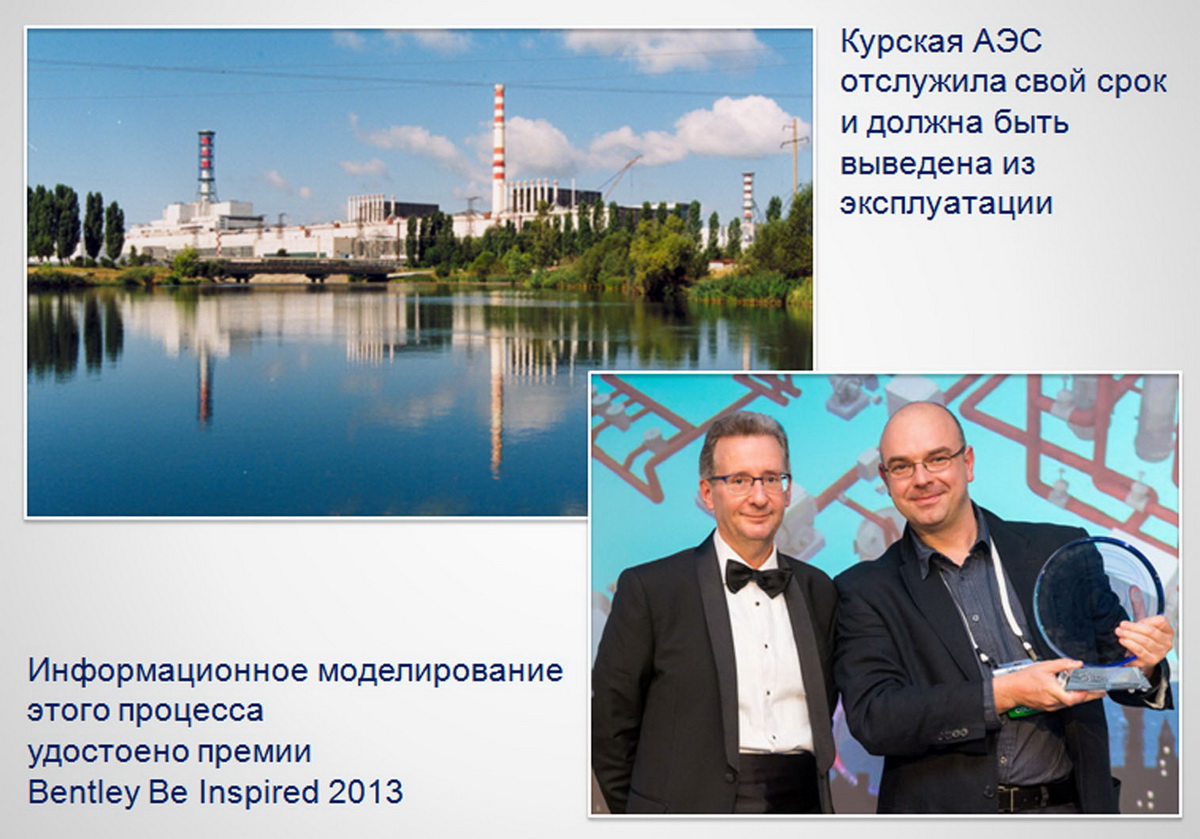
Gig. 4. The bulk of the work for modeling Kursk Nuclear Plant is completed in Bentley Systems.
Infrastructure facilities
Designing and building such facilities in Russia, with its huge distances, is a task of paramount importance. Here introduction of information modeling also ramps up, since in this sector pay-offs in speed and accuracy of design as well as model susceptibility to changes do make a significant difference.
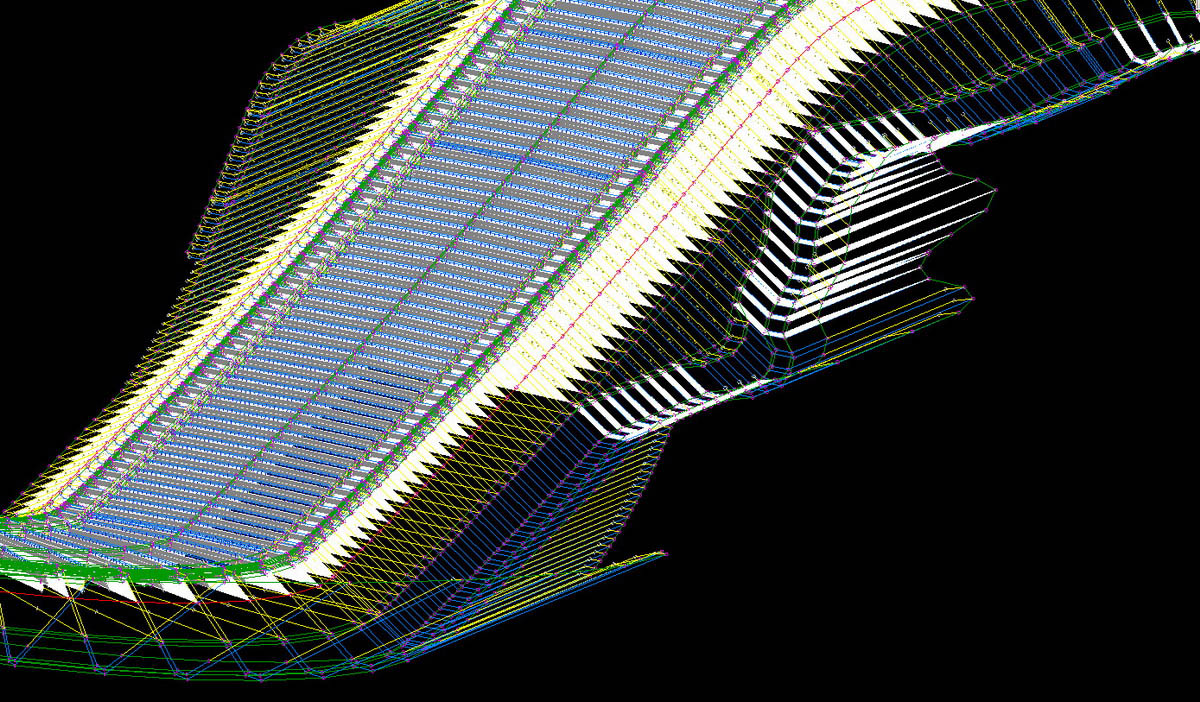
Fig. 5. The model of a road approach to the river boat station in Salekhard. A pilot project of “Sibrechproekt” with participation of Integral Consulting”. The work is in Autodesk AutoCAD Civil 3D, 2014.
Sochi Olympics showed BIM advantages in work with linear objects pretty convincingly. It also revealed another interesting phenomenon to the world: after the Games were over several major Olympic developers went into bankruptcy. Obviously, in every particular case the reasons for large companies’ crashing are different and very specific, but it is possible to outline a general trend: low design quality, numerous errors exposed already at the stage of construction, poor economic estimates of a project. All this is based on the decades-backed trust that the state would cover any shortage of money. And the state stopped paying for ineffective, money-losing works out of its pocket (sometimes it cannot event be called “works” but simply stealing due to poor accountability). Interestingly, I have had numerous but totally confused contacts with some of those bankrupt developers in the past two years: “Why on Earth do we need BIM when there is such an inflow of money!” Thus, they got some kind of an object-lesson. Draw the moral – adapt BIM!
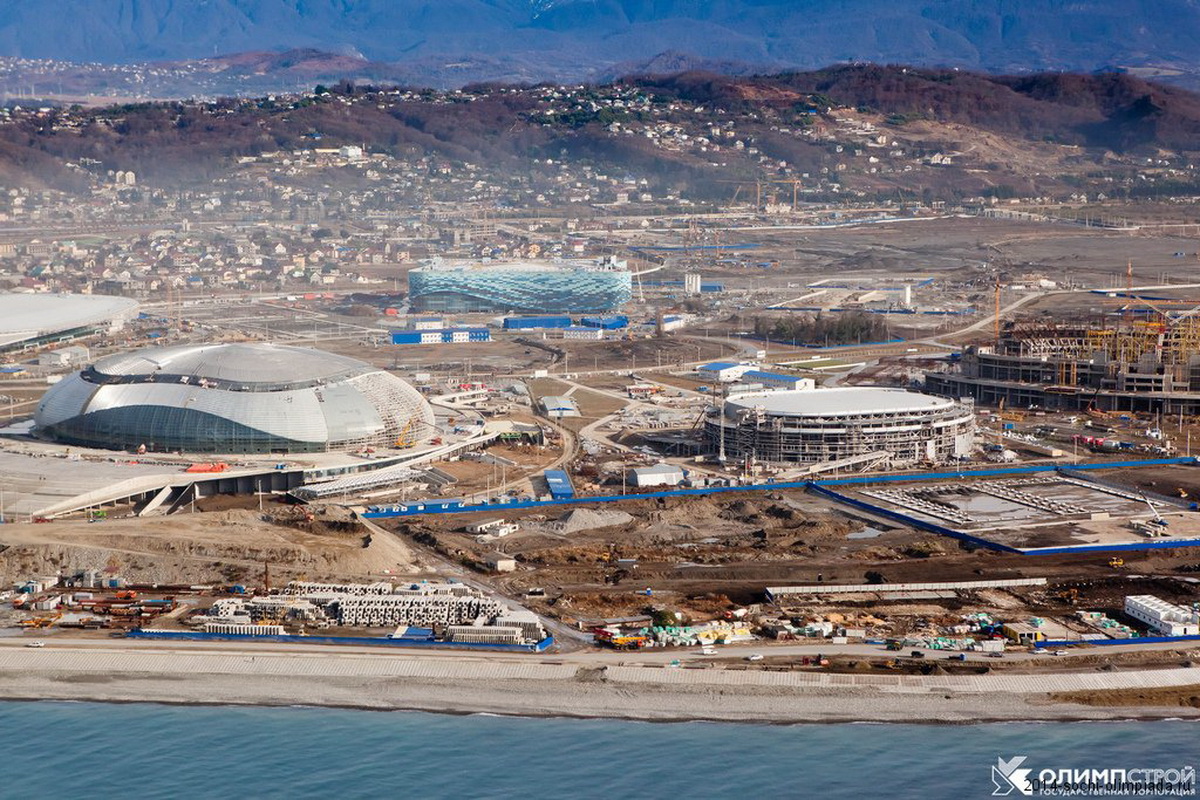
Fig. 6. Contrary to all skeptics, Sochi Olympics was a great success. Let’s hope that its lessons will also encourage adapting BIM in Russia.
The role of the state in adapting BIM
As already mentioned, the state in Russia is making the first attempts to manage the process of adapting BIM or at least to stimulate it. I believe this was facilitated not only by the efforts of BIM-enthusiasts but also by some “appropriate” economic conditions: shortening of funds in the treasury, big blunders in estimating the construction costs of the major flagship facilities, a sharp increase in construction costs in general as well as external conditions that in the recent months turned out to be purely aggressive against Russia.
It is too early, however, to talk about a radical changing of the game in the state approach in favor of BIM in design-building industry: not much is done, and there is always a danger that even the most cutting-edge ideas can be buried in the bureaucrats’ offices.

Fig. 7. At the same time the UK adapted a program for developing their building industry till 2025, where BIM is one of the principal items.
Estimated increase of BIM-programs
It is pretty obvious that today Autodesk Revit is the leader among the main BIM-programs in Russia and this leadership is gained in a persistent competition. The reason is that Revit offers a simple and effective end-to-end solution for creating building information models. As they say “the program meets the people”.
Nobody can be surprised nowadays with good work in Autodesk Revit. Still: my student Ilya Belen’ky, a graduate of Novosibirsk State Academy of Architecture and Civil Engineering (SIBSTRIN) in BIM (MA in construction) created a Revit family (I would call it a “superfamily”), which after inputting all necessary parameters generates a project of a single-storey shop-floor building. All work (except imputing more than a hundred parameters) takes ten minutes on an average-performance computer. Ten minutes – and the project is done!
I am not going to describe his work in detail because Ilya Belen’ky is presenting it at AURussia in Moscow on 1-2 October and we will publish an article on isicad. I just want to say that, first, one needs to be an excellent specialist and a devotee of one’s profession to magic up such a thing, and, second, it is a serious step already to automated information modeling – what is now a matter for enthusiasts, in a few years will become a large-scale practice. What’s more, the work became possible thanks to Autodesk Revit, since it does not require any knowledge of programming, just an interface available to ordinary users. But to solve this task one needs a wise head!
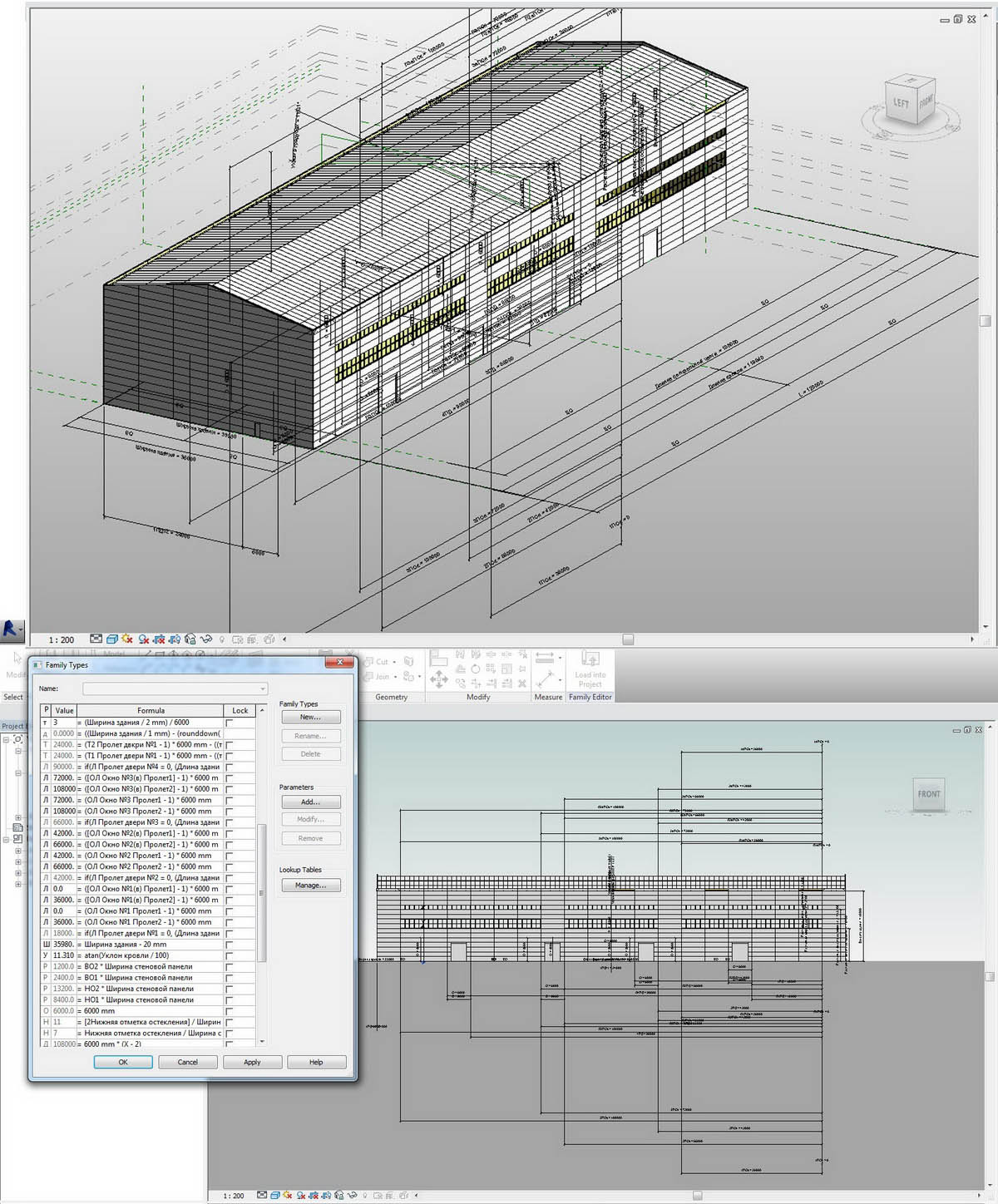
Fig. 8. Ilya Belen’ky. Shop-floor building as a single parametric family.
The work is completed in Autodesk Revit and submitted for Autodesk Innovation Awards Russia 2014.
Among specialized BIM-programs intended for structural engineering, I would like to emphasize, first of all, a new round in advancing Tekla Structures, as this well-proven program now has new partners in Russia.
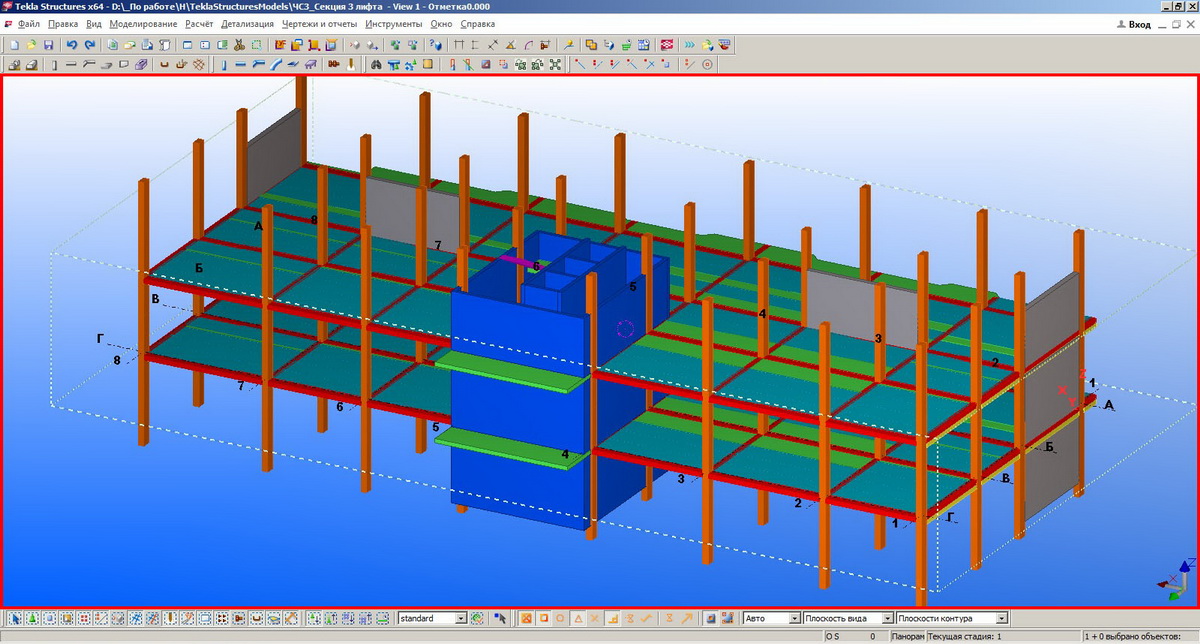
Fig. 9. Design of a multi-storey hybrid precast building in Tekla Structures.
Another important event in this field is launching AVEVA bocad on Russian market. The program is a comparable analog and a direct competitor of Tekla Structures, so designers and manufacturers of load-bearing structures, primarily, metal ones, finally have a real choice of software for their work.
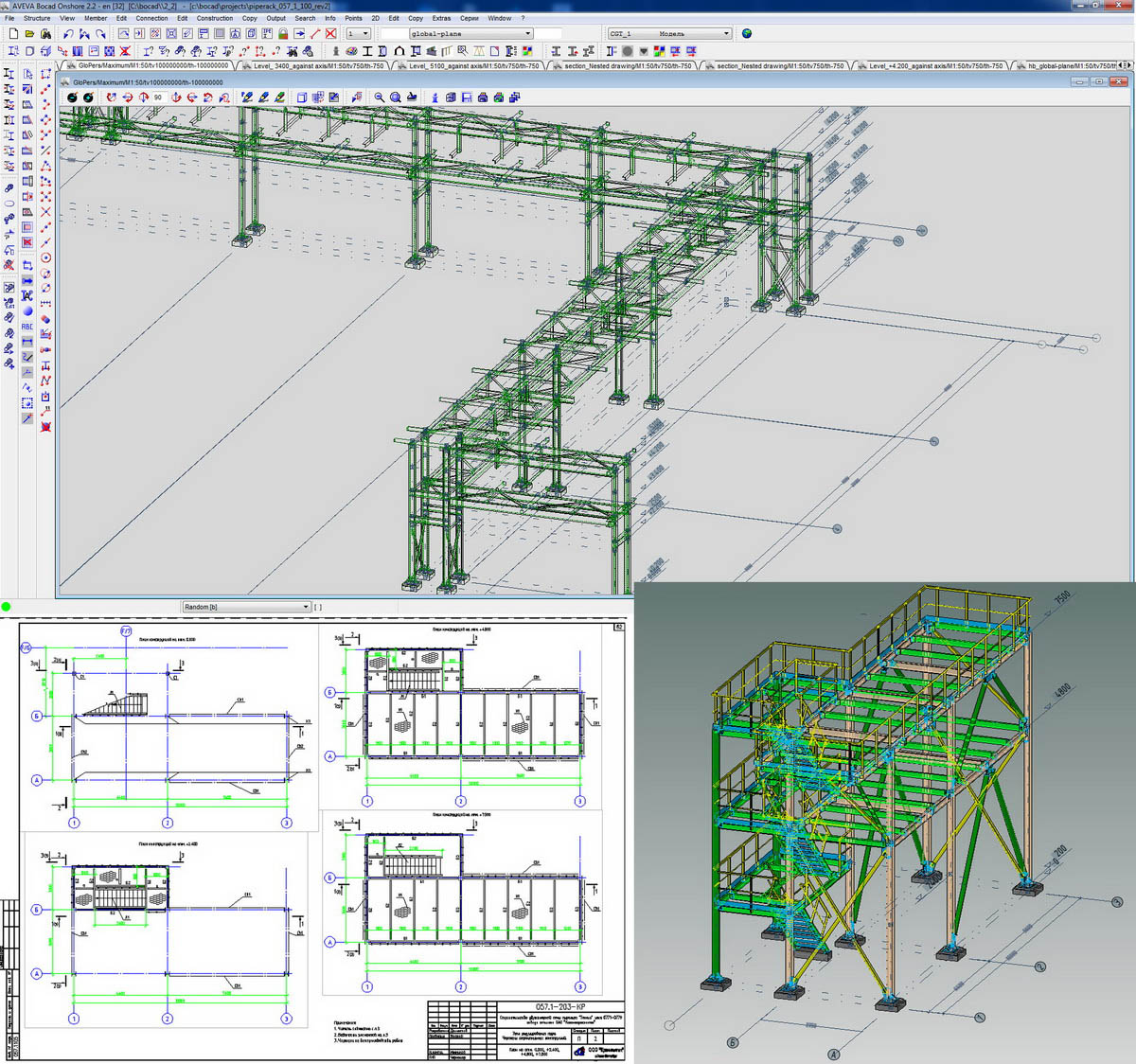
Fig. 10. Design and construction of a two-chambered pyrolysis furnace at “Kazanorgsintez” OJSC. “Cryogastech” Ltd.
The work is completed in AVEVA bocad, 2014.
One more news is that Autodesk now owns Advance Steel and Advance Concrete and as expected they appeared in a bundle with Revit.
And finally, “crème de la crème”: this year an integrated BIM-package in Russian, adapted to our standards entered Russian market: Bentley AECOsim Building Designer.
Bentley Systems is not a novice in Russia; it works closely with oil and gas companies and other infrastructure firms. It suffices to say that this year Russia demonstrates 14 projects at Be Inspired, which again takes place in London. However, in our design-and-building industry the company’s achievements have not been well represented. And now a breakthrough: a Russian version of Bentley AECOsim Building Designer, and a plug-in enabling to combine models created in this program with Autodesk Revit models. Add here accessibility of Autodesk Revit libraries for Bentley AECOsim Building Designer, and it becomes clear that competition on BIM-program market in Russia is getting serious. Bentley Systems has a little left to do: form an infrastructure of training centers and a far-reaching user support system across Russia.
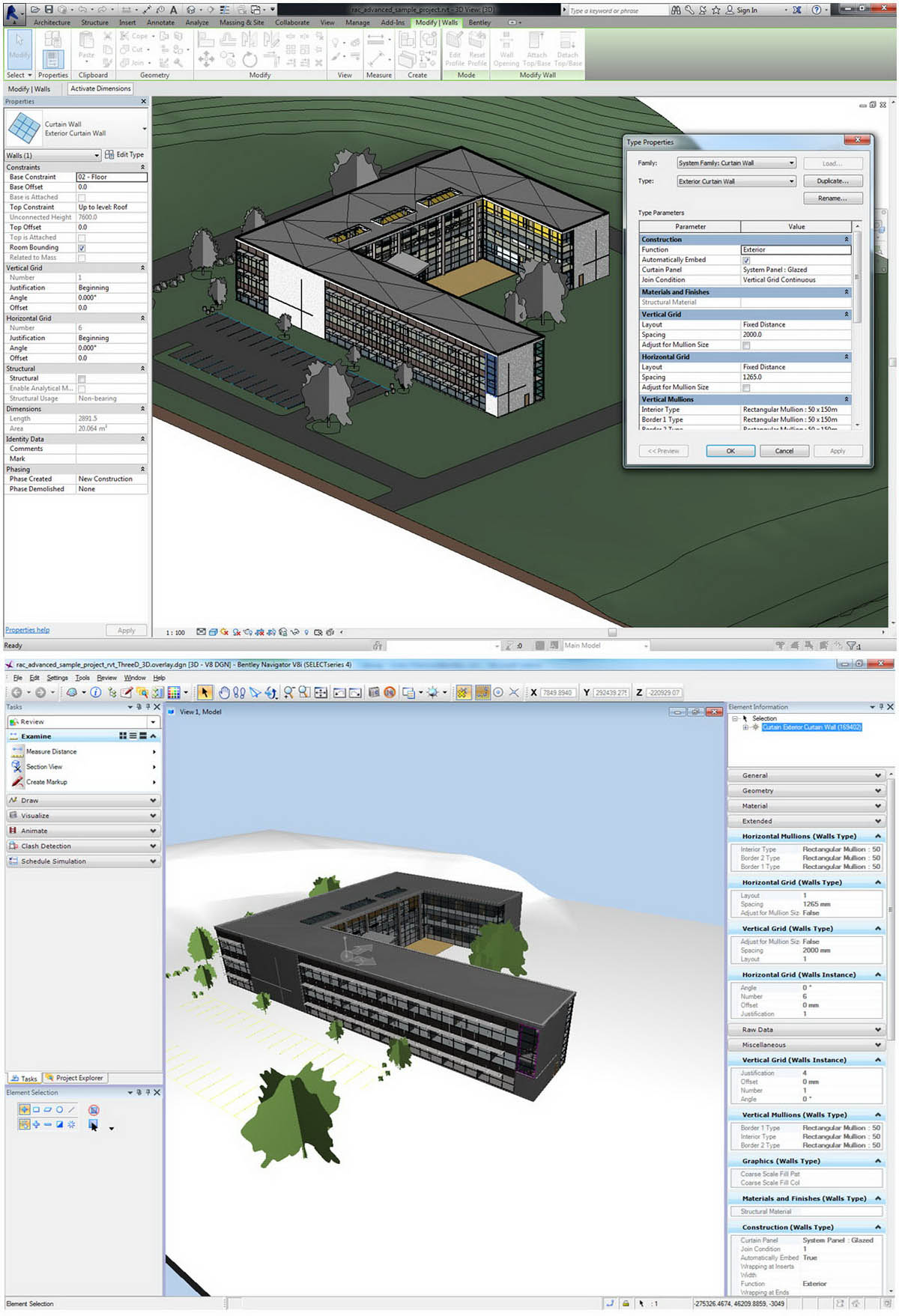
Fig. 11. A model was moved from Autodesk Revit to Bentley Navigator using a plug-in.
In the near future other developers, including some Russian ones, are expected to release their BIM-programs, but we’ll talk about it later: let them do it first.
Cloud technologies
Clouds are entering out life but rather slowly. I am aware that many tried to use them, first of all, for visualizing. I think, however, that in light of the recent sanction wars we shall have to forget about cloud technologies for several years – it is unlikely that any serious organization would wish to lose control over its information and risk “foreign switching off” of the access to software resources.
Adopting BIM and two types of marketing
Two years ago I wrote that 30% of successful BIM adaptation depend on the right choice of software and its capabilities, and 70% - on the right in-house structuring of this process. Today I can make the figures more specific: 20% and 80%. Adapting BIM is a complex matter associated with changing plenty of habitual business-processes. The phrase “BIM is not CAD!” renders the essence pretty accurately.
As expected, efforts of many vendors and their partners to promote BIM-programs now focus on implementation; the word “consulting” has become ingrained in our life, the time of simple sales is over. Those who failed to grasp the new reality are rapidly giving grounds and even withdraw from the market, sometime quite dramatically.
It’s nice to point out that the marketing line “2D is better than 3D” is also gradually fading, although the latest talks about import substitution have slightly revived it. Another phenomenon is mushrooming: now all programs become BIM. The twist was quite predictable and I think that our design-building industry will also sort it out.
Do universities train BIM specialists?
No, nothing has changed so far – there are no pointed efforts in this field. The worst is that the Ministry of Education is not interested in the issue.
There are exceptions, however, and the number of them is increasing. For instance, a BIM-laboratory is formed in Naberezhnie Chelny under the frame of Kazan Federal University; it is led by Oleg Pakidov. I guess, with the start of the academic year other good news will be coming from universities.
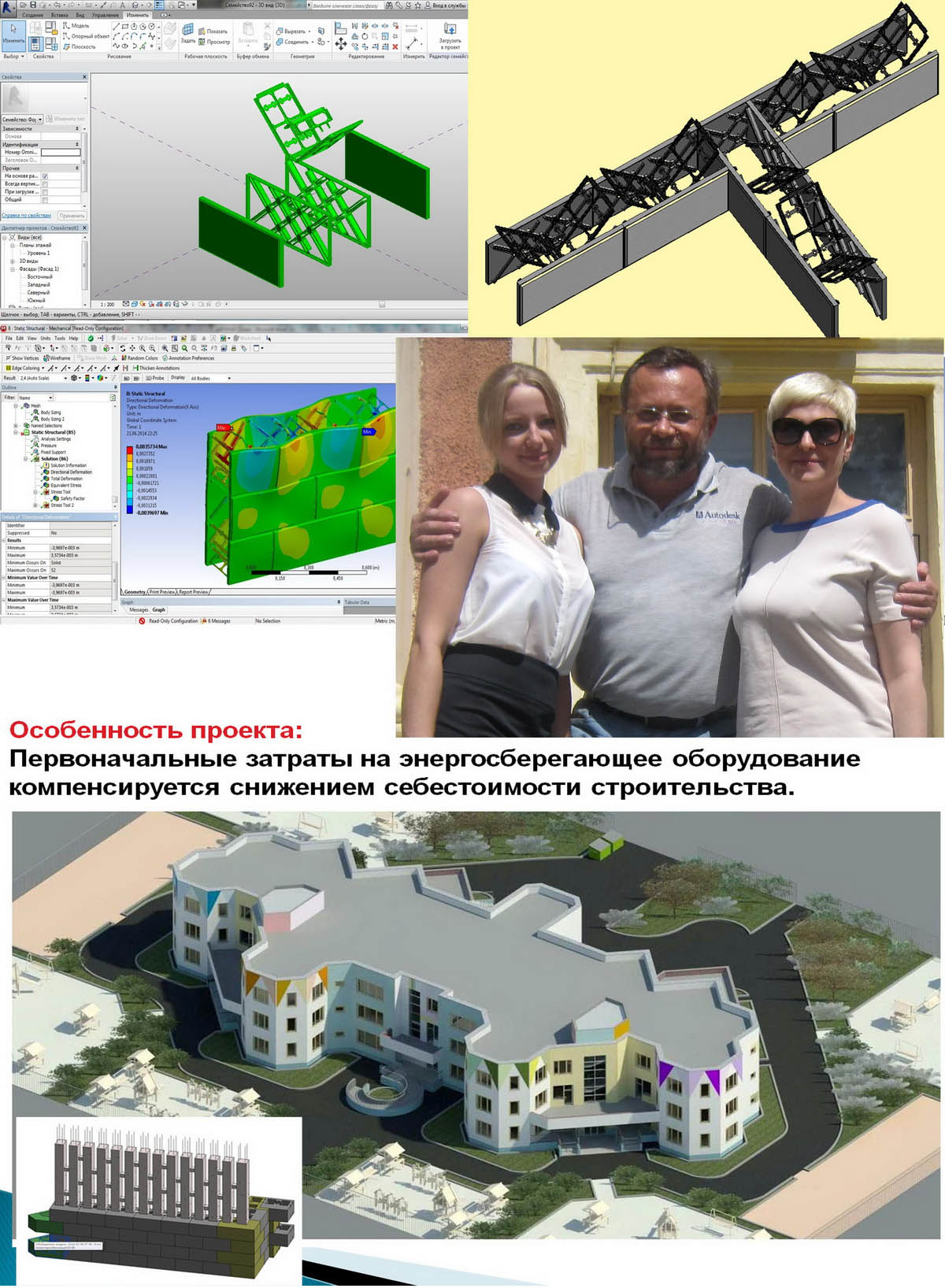
Fig. 12. BIM technology, stay-in-place-form and energy efficiency of buildings. Graduation projects of our Masters of construction, Yulia Ubogova and Victoria Doranovskaya. Novosibirsk State Academy of Architecture and Civil Engineering (SIBSTRIN), 2014.
Sanctions
This is a new issue in our publications. To be honest, a very unpleasant one since it involves an artificial (aggressive) influence upon economic processes painstakingly organized by the business-community - bilateral, multilateral and in any case mutually beneficial.
Still sanctions are our today’s reality. Thus, I would like to make a few points.
First. Sanctions are introduced by the governments of some countries and not by program developers. I think that to a greater extent sanctions are a blow against vendors rather than users, but it is rough luck on both.
Second. Formally, sanctions have not yet affected design-and-building industry in Russia and do not threaten BIM adaption, although it may only be a matter of time.
Third. Nobody is going to take back the purchased licenses so day-to-day work is not coming to a halt.
Forth. The time has come to think seriously as to how efficiently the available software is used in our design-and-building industry; particularly because at the time vast sums of money were spent to purchase it. Based on the experience, I dare say that the software is employed to no more than 20% of its capabilities. Better mastering of the available programs and optimizing their operational procedures (sometimes just developing such procedures) coupled with cutting down the costs of acquiring new programs (they are already purchased) form significant resources for advancing design-and-building industry in Russia.
Fifth (and the most important). Sanctions create truly unique conditions for developing Russian programs, particularly in BIM. I have no doubt that such developments will happen. It is simply a must.
See also:
Permanent link :: http://isicad.net/articles.php?article_num=17210

|
 |